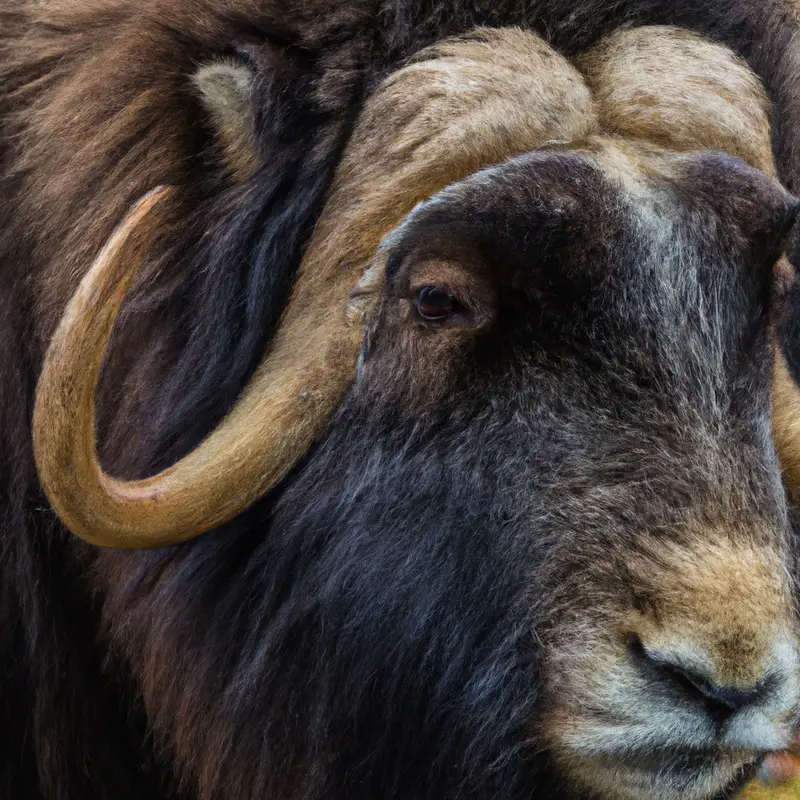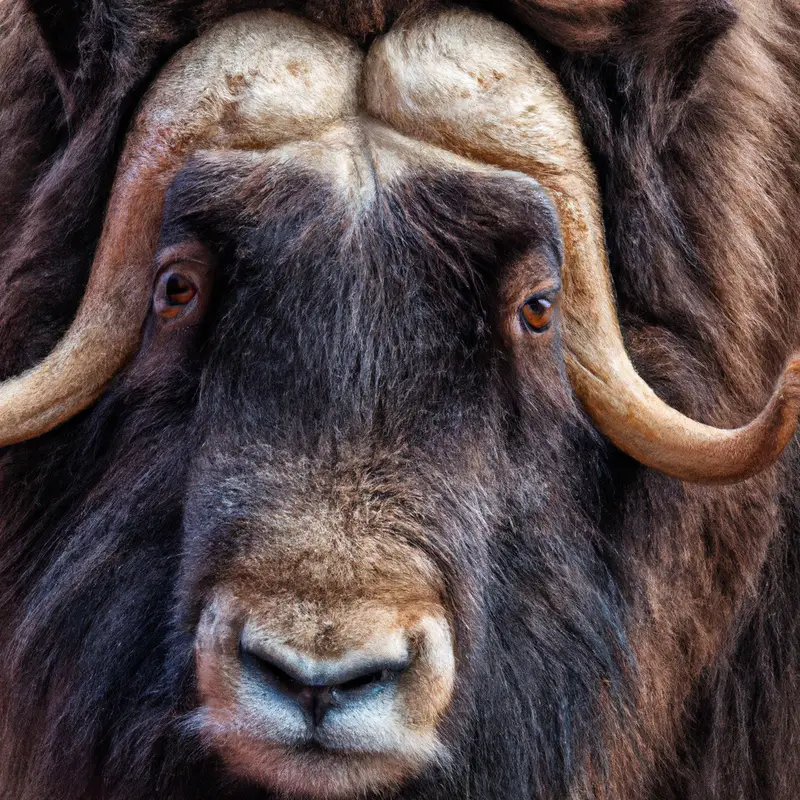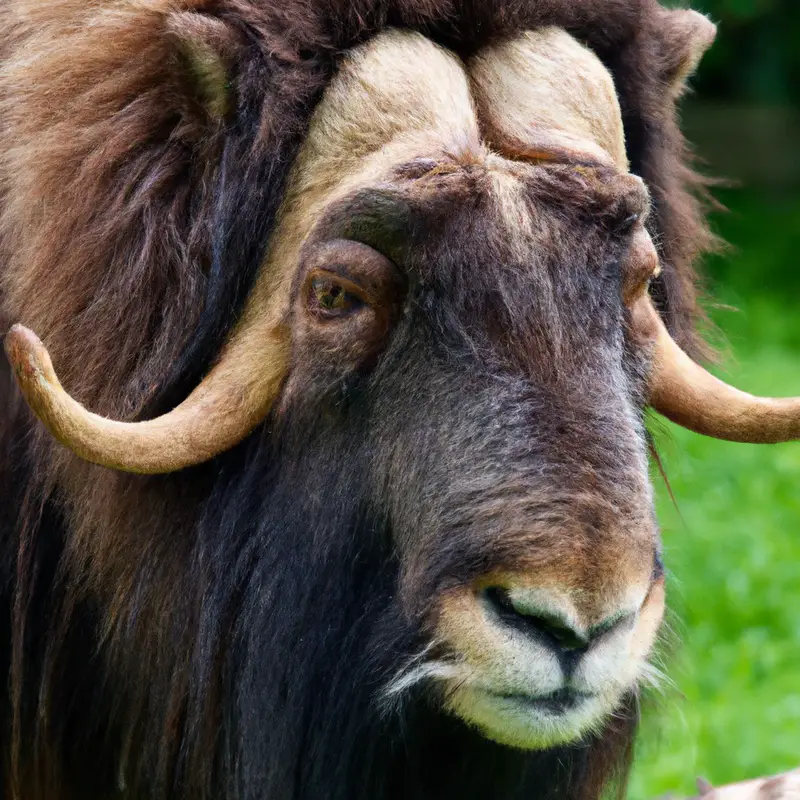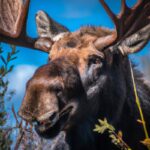Key Takeaways:
- Muskox hunting in Alaska is regulated to ensure sustainable populations and preserve their natural habitat.
- Hunting muskox provides unique opportunities for both recreation and obtaining high-quality meat.
- Muskox populations in Alaska have been successfully managed through conservation efforts and hunting regulations.
- Hunting muskox requires careful planning, knowledge of their behavior, and adherence to ethical hunting practices.
Are you ready for the hunt of a lifetime?
Join me on an exhilarating adventure as we delve into the world of Muskox hunting in Alaska.
The rugged landscapes, the harsh climate, and the thrilling chase of this majestic creature make for an unforgettable experience.
In this blog, I’ll share my expertise and guide you through the legalities, planning, equipment, techniques, safety precautions, ethical considerations, and post-hunt procedures involved in Muskox hunting.
So grab your gear, prepare your hunting spirit, and let’s embark on a remarkable journey in pursuit of the mighty Muskox!
| Hunting Muskox in Alaska | |
|---|---|
| Pros | Cons |
| 1. Unique hunting experience | 1. Challenging terrain and weather conditions |
| 2. Abundance of muskoxen in Alaska | 2. Limited hunting permits |
| 3. High-quality muskox trophies | 3. Expensive guided hunts |
| 4. Beautiful sceneries and wildlife | 4. Limited processing/storage facilities |
| 5. Opportunity to learn about traditional Alaska Native culture | 5. Compliance with strict hunting regulations |
| 6. Contribution to wildlife conservation and management | 6. Physical demands of the hunt |
| 7. Possible gear and equipment expenses | 7. Ethical considerations around trophy hunting |
What is Muskox hunting?
Legalities and regulations
Legalities and regulations surrounding muskox hunting in Alaska are strictly enforced to preserve the population and ensure sustainable hunting practices.
Here are the key points to keep in mind:
- Permits: You must obtain the necessary permits and licenses to hunt muskox in Alaska. These are issued by the Alaska Department of Fish and Game (ADFG and may have specific requirements and restrictions.
- Season and bag limits: ADFG sets the hunting season and bag limits for muskox. These regulations aim to control the number of animals taken each year and maintain a healthy population.
- Harvest reporting: It is crucial to report your harvest to the ADFG as soon as possible. This data helps them monitor the overall population and make informed management decisions.
- Hunting methods: Specific hunting methods may be prohibited or regulated, such as using aircraft or hunting from a motorized vehicle. It is essential to familiarize yourself with these regulations.
- Non-resident hunters: Non-resident hunters may need to hire a registered guide to hunt muskox in Alaska. This is to ensure compliance with local regulations and promote responsible hunting practices.
Remember to stay updated with the latest regulations from ADFG, as they may change from year to year.
It is your responsibility as a hunter to know and follow these rules to contribute to the conservation of muskox and the overall ecosystem in Alaska.
Planning your Muskox hunting trip in Alaska
Choosing the right time of the year
Choosing the right time of the year for your Muskox hunting trip in Alaska is important for a successful and enjoyable experience. It is recommended to plan your trip during the fall or winter months, when the Muskox are more active and visible.
The months of September to December typically offer favorable weather conditions and increased chances of spotting these majestic animals.
Additionally, be aware of any hunting seasons or regulations that may apply during your chosen time period. Consulting with local experts or outfitters can provide valuable insights and guidance for selecting the best time to embark on your Muskox hunting adventure.
Selecting your hunting area
Selecting the right hunting area is key to a successful muskox hunting trip in Alaska.
Look for areas with a healthy and sustainable muskox population.
Consider the terrain, as muskoxen prefer open tundra and rolling hills.
Look for areas with good visibility and natural barriers for cover.
Consult with local experts or hunting guides who have firsthand knowledge of the area.
Take into account any special regulations or permits required for hunting in Alaska.
Ultimately, choosing the right hunting area will greatly enhance your chances of a successful muskox hunt.
Hiring a guide or going solo
When it comes to hunting Muskox in Alaska, you have two options: hiring a guide or going solo. Hiring a guide can be beneficial as they have expert knowledge of the area, experience tracking Muskox, and can ensure your safety.
They can also provide necessary equipment and help with field dressing and packing.
On the other hand, going solo can be a more adventurous and fulfilling experience. However, it requires extensive preparation, including studying maps, researching hunting regulations, and ensuring you have the proper gear and skills.
Ultimately, the choice depends on your level of experience, comfort, and preference.

Preparing the necessary permits and paperwork
Preparing the necessary permits and paperwork for your Muskox hunting trip in Alaska is an important step.
You will need to obtain a hunting license from the Alaska Department of Fish and Game.
Additionally, you will need to apply for a permit specifically for Muskox hunting, as they are considered a special species.
Make sure to carefully review the application requirements and deadlines, as they can vary.
It is also important to familiarize yourself with any additional regulations and documentation that may be required, such as proof of a hunter education certification.
Taking the time to properly prepare and submit all necessary permits and paperwork will help ensure a smooth and legal hunting experience.
Essential equipment for Muskox hunting
Firearms and ammunition
When it comes to firearms and ammunition for hunting Muskox in Alaska, there are a few important factors to consider.
First, choose a firearm that is suitable for long-range shooting and can handle the harsh Alaskan weather conditions.
A high-powered rifle, such as a .300 Winchester Magnum or .338 Lapua, is recommended.
Make sure to bring extra magazines and a sturdy bipod for stability.
As for ammunition, opt for premium bullets that provide superior accuracy and penetration.
Remember to practice shooting and familiarize yourself with your chosen firearm before heading out on your Muskox hunting adventure.

Cold-weather gear
When it comes to hunting Muskox in Alaska, having the right cold-weather gear is essential.
Here are some key items you’ll need:
- Insulated Outerwear: Invest in a quality insulated jacket and pants designed for extreme cold conditions. Look for materials like down or synthetic insulation with high warmth-to-weight ratio.
- Layering System: A good layering system is crucial for adapting to changing temperatures. Start with a moisture-wicking base layer, add insulating mid-layers, and top it off with a waterproof and windproof shell.
- Warm Headwear and Gloves: Protecting your extremities is important. Look for insulated hats, balaclavas, and gloves that provide both warmth and dexterity.
- Sturdy Boots: Opt for insulated, waterproof boots with good traction to navigate icy terrain. Consider adding removable crampons or ice grips for additional grip on slippery surfaces.
- Quality Socks: Invest in moisture-wicking and warm socks to keep your feet dry and comfortable during long hours out in the cold.
- Face Protection: Windburn and frostbite can be a real concern, so don’t forget to bring a face mask or neck gaiter to cover your face and neck.
- Safety Equipment: Carry necessary safety equipment like a first aid kit, emergency shelter, and a reliable communication device in case of emergencies.
By choosing the right cold-weather gear, you’ll stay warm, comfortable, and safe during your Muskox hunting adventure in Alaska.
Field dressing and processing tools
Field dressing and processing tools are essential for successfully hunting muskox in Alaska.
You’ll need a sharp hunting knife with a sturdy, fixed blade for field dressing the animal.
A bone saw is also helpful for processing the meat.
Other tools you may find useful include game bags for transporting the meat, a meat grinder or slicer for processing, and a cooler with plenty of ice to keep the meat fresh.
Remember to clean and maintain your tools properly to ensure their longevity and effectiveness.

Specialized gear for Muskox hunting
When you’re hunting muskox, having the right gear is essential for a successful and safe experience. Here are some specialized gear items you’ll need:
- High-powered rifle: Muskox are tough animals, so you’ll need a rifle capable of delivering a powerful and accurate shot. Look for a caliber suitable for large game.
- Optics: Good binoculars and a spotting scope are vital for locating muskox in their vast and challenging habitat.
- Warm clothing: Muskox hunting often takes place in frigid temperatures, so dress in layers to stay warm and comfortable. Insulated, waterproof boots and gloves are a must.
- Backpack: A sturdy, spacious backpack is necessary for carrying extra gear, ammunition, water, and food on long hunts.
- Knife: A high-quality, sharp knife is essential for field dressing and processing the harvested muskox.
- Game bags: In order to protect the meat from spoilage and insects, pack along game bags for proper storage.
Remember to always prioritize safety and respect for the animals you are hunting.
Muskox hunting techniques
Spot and stalk method
Spot and stalk is a common method used for hunting muskox in Alaska.
In this technique, you search for the muskox from a distance and then quietly approach on foot, using the surrounding terrain as cover.
The key is to remain stealthy and observe the muskox’s behavior to determine the best approach.
Once you get within range, you take a shot while ensuring your safety and ethically harvesting the animal.
It requires patience, skill, and good knowledge of the muskox’s habits and habitat.
Using camouflage and cover
Using camouflage and cover is vital when hunting muskox in Alaska. Blend into your surroundings with appropriate camouflage clothing and gear that matches the colors and patterns of the environment.
Utilize natural cover like trees, rocks, or vegetation to stay hidden from the keen eyes of muskox.
Move slowly and quietly, minimizing any sudden movements or noise that may alert them to your presence. Patience and careful positioning are key to a successful hunt.
Tracking and calling techniques
Tracking and calling techniques are essential for successful muskox hunting.
When tracking, look for fresh tracks and scat to determine the muskox’s direction and speed.
Pay attention to the ground’s firmness and vegetation disturbed by their movement.
When calling, mimic the sounds of a muskox to attract them.
Use a combination of grunts, snorts, and low-frequency sounds.
Practice your calling techniques to sound convincing and increase your chances of luring a muskox within range.
Remember, both tracking and calling require patience, persistence, and understanding of muskox behavior.
Safety precautions for Muskox hunting
Understanding the behavior of Muskox
Understanding the behavior of Muskox is essential for successful hunting.
These majestic creatures are known for their herding behavior, forming tight-knit groups for protection against predators.
It’s important to approach them calmly and slowly, avoiding sudden movements that might startle them.
Muskox are generally peaceful, but if they feel threatened, they may charge.
Be aware of their body language, which can indicate their level of agitation.
Additionally, understanding their migration patterns and preferred habitats can increase your chances of encountering them in the wild.
Bear safety precautions
When it comes to bear safety precautions, it’s important to be well-prepared and aware of your surroundings.
Here are some key tips to keep in mind:
- Carry bear spray and know how to use it effectively. This can help deter a bear if it gets too close.
- Make noise while hiking or moving through dense vegetation to avoid surprising a bear. This lets them know you’re in the area and gives them a chance to move away.
- Travel in a group if possible. Bears are less likely to approach a larger group of people.
- Store your food properly to avoid attracting bears to your campsite. Use bear-resistant containers or hang food and other scented items from a tree branch at least 10 feet off the ground.
- Be observant and watch for signs of bear activity such as tracks, scat, or torn-up vegetation. If you see these signs, adjust your route accordingly.
Communication and emergency devices
Communication and emergency devices are essential when hunting Muskox in Alaska.
A reliable communication device, such as a satellite phone or two-way radio, ensures that you can stay in touch with your hunting party or call for help if needed.
Additionally, carrying an emergency locator beacon (ELB) can be a lifesaver in case of an emergency.
Make sure to familiarize yourself with the operation of these devices before your hunt and keep them easily accessible at all times.
Always prioritize safety and be prepared for any situation that may arise.
First aid kit essentials
When going on a hunting trip, it is crucial to have a well-stocked first aid kit. Here are some essentials you should include:
- Bandages and adhesive tape: These are essential for covering cuts and wounds to prevent infection.
- Antiseptic wipes or solution: Use these to clean wounds before applying bandages.
- Tweezers and scissors: These will come in handy for removing splinters or cutting bandages.
- Pain relievers: Include over-the-counter pain relievers for headaches, muscle aches, and sprains.
- Allergy medication: In case of an allergic reaction, have antihistamines on hand.
- Sterile gauze pads: These can be used to dress wounds and help stop bleeding.
- Medical gloves: Use gloves to protect yourself from bloodborne pathogens.
- CPR mask: This is a must-have in case you need to perform CPR on someone who is unconscious.
Remember to regularly check the contents of your first aid kit and replace any expired items. It’s always better to be prepared for any unexpected injuries while on a hunting trip.
Ethical considerations in Muskox hunting
Hunt only within legal limits
When it comes to hunting muskox in Alaska, it is crucial to hunt only within legal limits.
By doing so, you are not only following the law but also ensuring the conservation and sustainability of the muskox population.
Hunt regulations such as bag limits and season dates are put in place to protect the species from overhunting and maintain a healthy population.
By obeying these regulations, you are contributing to the long-term viability of muskox hunting and preserving this treasure for future generations to enjoy.
Remember, it is everyone’s responsibility to hunt responsibly and ethically.
Respect for the animal and its environment
Respecting the animal and its environment is essential when hunting Muskox in Alaska. It’s important to approach the hunt with a deep appreciation for the animal’s life and the natural habitat it calls home.
This means hunting responsibly, taking only what you need, and ensuring minimal waste.
Additionally, it’s crucial to follow all regulations and guidelines set by the local authorities to protect the population and preserve the ecosystem. Show reverence for the Muskox by leaving no trace and being a responsible steward of the environment.
Sustainable hunting practices
Sustainable hunting practices are essential for the conservation of wildlife. Here are a few key principles to follow:
- Respect hunting quotas: Adhering to regulations helps maintain healthy populations and prevent over-harvesting.
- Selective targeting: Focus on older or surplus individuals, ensuring the reproductive capability and genetic diversity of the species is maintained.
- Ethical shot placement: Aim for quick and humane kills to minimize suffering.
- Respect for the environment: Limit disturbance to habitats and wildlife while hunting, and dispose of waste responsibly.
- Continuous learning: Stay informed about hunting practices, laws, and conservation efforts to adapt and improve your approach.
By practicing sustainable hunting, we can enjoy the experience while contributing to the long-term survival of wildlife populations.
Field dressing and processing Muskox
Proper field dressing techniques
Proper field dressing is crucial to ensure the quality of your meat and to prevent spoilage.
Here are some techniques to follow:
- Start by making an incision along the belly and continue it up to the chest area.
- Carefully remove the hide, taking care not to puncture the internal organs.
- Once the hide is removed, cut around the anus and genitals, being cautious to avoid puncturing the intestines.
- Remove the internal organs by cutting through the diaphragm and carefully extracting them.
- Rinse the cavity with clean, cold water and wipe it dry.
- If you plan to quarter the animal, follow the natural separation points of the muscles to make clean cuts.
- If you’re not able to refrigerate the meat immediately, consider using game bags or coolers with ice packs to keep it chilled.
Following these proper field dressing techniques will help ensure that your harvest remains safe and of high quality.
Happy hunting!
Transporting and caring for the meat
Transporting and caring for the meat is essential to ensure the quality and safety of the meat you harvest during your muskox hunt. Here are some tips to help you with this:
- Keep the meat cool: After field dressing, promptly cool the meat to prevent spoilage. You can use coolers with ice or dry ice to maintain a low temperature.
- Proper storage: When storing the meat, make sure it is properly wrapped to prevent any exposure to air. Vacuum-sealed bags are ideal for this.
- Consider the size: If you have a large amount of meat, you may need to divide it into smaller portions for easier transportation and storage.
- Transporting: When transporting the meat, keep it in a cooler or an insulated container to maintain the temperature and prevent spoilage. If possible, minimize exposure to heat and direct sunlight.
- Quick freezing: If you’re not planning to consume the meat within a few days, consider freezing it to extend its shelf life. Wrap the meat in freezer paper or use airtight freezer bags.
Utilizing the entire animal
Utilizing the entire animal is an important practice that shows respect for the animal and reduces waste. Here are some ways you can make the most of your muskox:
- Meat: The meat of the muskox is lean and flavorful. Make sure to cook it properly to enjoy its full taste. You can try different recipes like stews, roasts, or even burgers.
- Bones: The bones can be used to make broth or stock, adding depth of flavor to soups and sauces. They can also be used for making tools or crafting.
- Hide: The hide can be tanned and used to make various items like clothing, rugs, or decorative pieces. It can also be used for leatherworking.
- Organs: The organs, such as heart, liver, and kidneys, can be cooked and enjoyed as a delicacy.
- Fat: Render the fat to make tallow, which can be used for cooking or making candles and soap.
By utilizing the entire animal, you honor the animal’s life and make the most of the resources it provides. It’s a sustainable and responsible way to hunt and use muskox.
Trophy preparation and taxidermy options
Field preparation for a shoulder or full-body mount
For field preparation of a shoulder or full-body mount, begin by taking care not to damage the hide or trophy. Use a sharp knife to carefully remove the hide, starting from the underside.
Keep the hide as clean and dry as possible.
Once the hide is removed, roll it up and freeze it to preserve it until you can bring it to a taxidermist. As for the skull, clean it thoroughly and wrap it in a plastic bag for transport.
Choosing a taxidermist for Muskox trophies
Choosing a taxidermist for your Muskox trophies is an important decision.
Here are some key factors to consider:
- Experience: Look for a taxidermist with extensive experience in handling large and exotic animals like Muskox. Ask for examples of their previous work and ensure their style matches your preferences.
- Reputation: Do your research and read reviews or talk to other hunters who have used their services. A reputable taxidermist will have a track record of delivering high-quality results.
- Communication: Find a taxidermist who is willing to listen to your specific instructions and communicate throughout the process. Clear and open communication will help ensure your vision for the trophy is met.
- Turnaround time and pricing: Inquire about the estimated timeframe for completing the work and ask for a detailed breakdown of the pricing. Make sure they are transparent about any additional costs or fees.
- Shipping and handling: Discuss how the taxidermist handles shipping and transportation of the finished trophy. You want to ensure it will be properly packaged and delivered without damage.
Remember, choosing the right taxidermist is essential in preserving the memory of your Muskox hunting experience, so take your time and make an informed decision.
Alternate trophy options for Muskox hunting
When it comes to trophy options for Muskox hunting, there are a few alternatives to consider.
Firstly, you can choose to mount the entire Muskox as a shoulder mount or full-body mount.
This option allows you to showcase the animal in its entirety and is a popular choice among hunters.
Secondly, you can opt for a skull mount, where only the skull and horns are preserved.
This is a more cost-effective and space-efficient option.
Lastly, you can also consider preserving the cape and horns separately.
This allows for easier transportation and gives you the flexibility to choose how you want to display them later on.
No matter what option you choose, make sure to follow the local regulations and guidelines.
Happy hunting!
Final Verdict
Hunting Muskox in Alaska is an exhilarating and rewarding experience for those who appreciate the challenge and beauty of the hunt. It requires careful planning, essential equipment, and knowledge of hunting techniques.
However, it is imperative to adhere to legalities, ethical considerations, and safety precautions to ensure a responsible and sustainable hunt.
Proper field dressing and trophy preparation are necessary to fully utilize the animal and preserve the memory of the hunt. Overall, Muskox hunting in Alaska offers a unique and unforgettable adventure for the experienced and dedicated hunter.








